Logs - Travel
-
Ahmedabad
Duration: 9th Jun 17 => 11th Jun 17I am typing this blog while on the last third step of the riverfront where the water is flowing brim to brim, the adventure seekers crossing via zip line, a ride offered for 100.Not long ago, but some days back while I was planning my Course, I realized there are so many things that one can do at the Sabarmati, by the side of the River; on the banks and across.Not long ago, but some days back while I was planning my Course, I realized there are so many things that one can do at the Sabarmati, by the side of the River; on the banks and across.
- For 11 km you can Cycle in morning and evening. One hour costs just 40 bucks.
- You can do a zip line from NID side to Jamalpur area,now just for petty 100 bucks.
- You can sit on wooden benches of Amul NID and sip a lemonade or a cold coffee.
- You can just sit on footsteps and watch the river’s soothing flow, amidst breeze.
- You can be adventurous and ride the road roller like a coyote wearing a helmet.
-
Pune
Duration: 7th Jan 18 => 8th Jan 18Pune with its history, museums, nearby hill forts that give a bird’s eye view of the surroundings; restaurants, nightlife, and large student population ~ is a city on the rise. A vibrant mix of the old and the new, capitalism and spiritualism; the city has been catapulted on the global map because of the famous Osho International Meditation Resort founded by the late guru Bhagwan Shree Rajneesh. The local people or Puneris, as they are known, despite belonging to different religions, castes, and ethnicities, live in peace and harmony, and it is this attitude that weaves the entire fabric of the city and makes it beckoning and enchanting to all. This charming city once known for being a little more than an army outpost, has witnessed a distinct change in recent times which Vikram and I discovered courtesy of the wonderful team at the Conrad Pune who were hosting our stay in the city. Whether on a business trip or visiting at leisure, here are a few spots that should not be missed. Are you ready to explore Pune like a local? My recommendations are on food, culture and historical things to do. Pune mornings are glorious ~ so kick start your day and breathe in the essence of the city with an early morning stroll that should leave you ravenously hungry. Then jot down those early memories of the city over a sweet hot chai with fried eggs and bun maska! We start our early day at Vohuman Café {vohuman stands for ‘good thoughts’} ~ an iconic place and one of the oldest Irani joints in Pune ~ for a lip-smacking breakfast before we get on to traversing the city. A visit to one of these quaint Irani cafes is a must on every foodie’s list. And, I can vouch for the eggcellent and mouth-watering fare that is served here. Find your place at one of their cramped tables with heavy marble counter-tops and bentwood chairs and order away! I am told that as a true Puneri, this is a favourite breakfast joint not only to enjoy the morning delicacies ~ omelette and cheese toast {their secret: a humongous chunk of cheese goes into every omelette, and a slab in every cheese toast}, or cream plate, a small saucer filled with buffalo cream ~ but also to soak in the old world charm and eclectic vibes of this cool city. Think about it; I was salivating at the memory of the menu at this modest café for weeks!
-
Indore
Duration: 15th Mar 18 => 17th Mar 18Indore, known as the "Food Capital of India," is a bustling city located in the central Indian state of Madhya Pradesh. With a rich cultural heritage, stunning historical sites, and an array of delicious culinary delights, there are countless reasons why people should add Indore to their travel bucket list. One of the top reasons to visit Indore is its food scene. From street food stalls to fine-dining restaurants, the city is renowned for its mouth-watering cuisine. Visitors can indulge in local delicacies like poha jalebi, dal bafla, and bhutte ka kees. The city also hosts the famous Sarafa Bazaar, a night market that comes alive with food stalls and sweet shops after sunset, offering a variety of street food options to tempt your taste buds. Indore is also a hub for history enthusiasts. The city has a rich heritage and is home to several historical landmarks, such as the Lal Bagh Palace, Rajwada Palace, and the Kanch Mandir. Lal Bagh Palace is a stunning piece of architecture and houses a museum that displays a vast collection of antique artifacts. The Rajwada Palace is a perfect blend of Mughal and Maratha architectural styles and is a must-visit for those interested in history. Apart from the historical sites, Indore also has a lot to offer for nature lovers. The city is surrounded by verdant green forests, lakes, and waterfalls, which are perfect for day trips and picnics. Visitors can explore the scenic beauty of Patalpani Waterfall, Ralamandal Wildlife Sanctuary, and the Kamlapati Palace, which offers stunning views of the city.
-
Bhopal
Duration: 1th Aug 19 => 5th Aug 19Let’s face it, Bhopal does NOT appear high up on travel bucket lists or itineraries. Why, even when considering to visit it, you may well be asked “What for???” I was, and that too repeatedly. At the most, the capital city of Madhya Pradesh is seen as a stepping stone for Buddhist Sanchi. On its own, it is a bit of an enigma, its secrets veiled from casual inquiry. Which is a good thing, for it means you will have the “City of Lakes” to yourself, with very few tourists, and be in the company of locals instead. According to legend, Bhopal was founded by Parmara Raja Bhoj, King of Malwa, in the 11th Century AD. Bhopal as one knows it today was founded by Dost Mohammad Khan, governor of Malwa during Mughal rule and Bhopal’s first Nawab (1707 – 1728). So, why Bhopal, you may well ask. For starters, nowhere else are there not one, but two UNESCO World Heritage Sites, albeit 8,000 years apart, at a distance of just 50 kilometres away: The Great Stupa built by Ashoka the Great at Sanchi and India’s largest collection of prehistoric rock art at Bhimbetka. Whilst one is the acme of Buddhist spirituality and art, the other is a record of prehistoric life in uncanny detail. Furthermore, unlike any other city in India, Bhopal was ruled by four generations of women in the 19th Century: the Nawab Begums. Under these royal ladies, Bhopal thrived at every level, from infrastructure to economics. Bhopal’s waterworks, railways, postal system and municipality established in 1907, all form part of their legacy. Exotic palaces and extravagant mosques still recount stories of their glory. Finally, Bhopal’s commitment to hosting and curating world-class museums is another side to it which further differentiates it. Whether it be to celebrate the inimitability of its indigenous tribes who form 21.1 percent of Madhya Pradesh’s population or to preserve cultural treasures comprising paintings, bronzes, and sculptures from various parts of the state—heritage in its whole, without prejudice or partiality, is honoured. On the other hand, Bhopal has also been the site of great suffering as a result of corporate corruption. Who can forget Union Carbide Corporation’s gas leak on that December night of 1984 which killed 25,000 people and made over half-a-million men and women across multiple generations disabled. Many a tear and dumbed down complaint still echo in the old quarter. What started off as a stopover for Sanchi, in a nutshell, became so much more when I visited it in March this year. As a traveller, Bhopal gave me incomparable experiences. Enough to make me want to share them with you. So here are my 11 experiences which I had only because I was in Bhopal, because of Bhopal being what it is. Have you enjoyed some of these too?
-
Hampi
Duration: 10th Dec 20 => 12th Dec 20During my last visit to Goa, I was lucky enough to travel to the neighbouring state of Karnataka and visit the incredible ruins at Hampi, and here are some of the amazing things that you can find there… Hampi is one of India’s most striking and fascinating archaeological sites, once the imperial capital of Vijayanagar in the 14th century. Today it is recognised as a UNESCO World Heritage Site attracting thousands of visitors every year from all over the world. From Goa, there are two ways to reach Hampi, taking the local train (approx. 9 to 10hrs) or the more comfortable option, which of course I decided to take, travelling by road in an air-conditioned car. Leaving early in the morning, the seven hour drive was quite spectacular, taking me inland, high into the mountainous Western Ghats and on towards the arid Deccan Plateau. As we neared our final destination the terrain changed again – vast stretches of boulder-strewn hills, surrounded by coconut palms, rice paddies and banana plantations. Hampi itself is spread over a huge site and dominated by the Tungabhadra River, running through the city. There are over 500 monuments from beautiful Hindu temples and extravagant palace ruins, to royal pavilions and even bastions. It would be impossible to list them all, so here are a few of my favourites:
- Virupaksha Temple: One of the city’s oldest monuments and Hampi’s only working temple, the Virupaksha Temple complex is located at the end of the Hampi Bazaar. The impressive tower at its entrance was built in 1442 and can be seen from many parts of the city, measuring at some 49m high.
- Royal Enclosure:Here you will find some beautiful monuments including the Lotus Mahal, an intricately carved pavilion, believed to be the queen’s recreational mansion and the impressive Elephant Stables, 11 grand doomed chambers which in their day were home to the royal elephants.
- Vittala Temple One of the most well-known temple complexes in Hampi due to is beautifully ornate structure. Here you will find the iconic stone chariot centrally located in the courtyard.
- Tungabhadra River: Tungabhadra River can be seen from many parts of Hampi, twisting and turning through the hills. I enjoyed cooling off by the water and taking in the surrounding peaceful setting.
- Watching the sunset: Watching the sunset over Hampi was the favourite part of my trip. There are so many viewing points around the site where you can take a seat and watch the sun setting over the hills and the temples below.
-
Kalsubai
Duration: 25th Jan 20 => 28th Jan 20The Kalsubai trek experience is one of my most memorable experiences. The height of Kalsubai is 1646 metre and it is the highest point of Maharashtra. Enthusiastic trekkers often set out for the Kalsubai trek from Mumbai and Pune. According to us, the trek difficulty level is moderate. It needs endurance and a bit courage. There are metal ladders and monkeys to deal with while on the trek. Kalsubai night treks are also arranged by several organisations, however, we hiked it during daytime. Baari village is the base village of the trek. Often the villagers offer guide services. Food stalls selling lime water, mineral water can be found throughout the trekking trail. Bye, happy journey. Come back soon,” our hosts shouted out to us when we left for Kalsubai trek. Shades of grey adorned the sky. The storminess of the weather catalysed our willpower to scale Kalsubai. Little boys and girls were going to school. On the two sides of the road, lush greenery extended for miles. It was difficult to separate the grasses from patches of paddy fields. Rain drenched trees populated the slopes of the hill. Dhoti-clad men donning white caps were walking on the village path with us.
-
Pondicherry
Duration: 10th Dec 20 => 12th Dec 20A portion of France still exists in India in the French Quarter in Pondicherry, which has a history of being acquired and colonised by the French East India Company to set up a trading centre. Pondicherry had been passed on to multiple colonial powers of Dutch, Portuguese, English, but predominantly French. Even now there's a huge French influence in the French Colony of Pondicherry, now a Union Territory of India. When Pondicherry was handed over to India, the residents were given an option to maintain their French passports. The residents (Indians and non-Indians originally) in Pondicherry are French citizens, the streets have retained their French names, the residents speak French, there are restaurants and cafes serving French food with menus in French language, the villas in French architectural styles prevail. Lately I've been obsessed with exploring different architectural houses in India. I have explored the Portuguese Heritage Colony in Fontainhas in Goa and lived in Traditional Himachali house in Tirthan Valley. I have visited Pondicherry twice, my last visit to this place was on my journey on the Golden Chariot - the only luxury train in South India. Both the times I had experienced the French culture and I can keep going back to Pondicherry for the awesome French food. Pondicherry is planned according to the French grid structure and has perpendicular streets. The French Quarter lies on one side of the canal that separates the town from the Indian Quarter. The Heritage Walk in the French Quarter of Pondicherry is through the primary four streets: RUE DUMAS, RUE ROMAIN ROLLAND, RUE SUFFREN and RUE LA BOURDONNAIS. The best way to soak in the French culture is to explore these streets on foot.
-
Karnataka
Duration: 18th Feb 20 => 23th Feb 20Karnataka is home to many natural monuments and archeological sites left by past empires. Relics from the empires of Chalukyas of Badami, the Vijayanagar empire of Hampi, and the Hoysala empire of Halebidu are especially stunning; telling of their past glories and lasting cultural influence. Of these three empires, Hoysalas (11th to 14th centuries) are remembered for their patronage of architectural endeavors rather than their military conquest. Most of the temples they built are currently in ruins except for a handful.
Most of these sites are located near Belur which was the first destination of our trip. While on the way to Belur from Hassan, the province capital, we stopped at the Doddagadduvalli. The town is home to temples from the Chalukya era with Laxmi mandir with 4 Garbhagruha (sanctums). The Dwarpals of Laxmi or Durga feature two Vetals with some truly amazing hairstyles (including breaded hair). The other three Garbhagrihas are dedicated to Shiva, Vishnu, and Parvati. Forming a quadrilateral of brother-sister (Shiva-Laxmi and Vishnu-Parvati) and husband-wife(Shiva-Parvati and Vishnu-Laxmi) relationships. This temple has historical importance and was once considered the second most important place of worship in the Chalukya Empire after the Laxmi Temple at Kolhapur.
- Doddagadduvalli
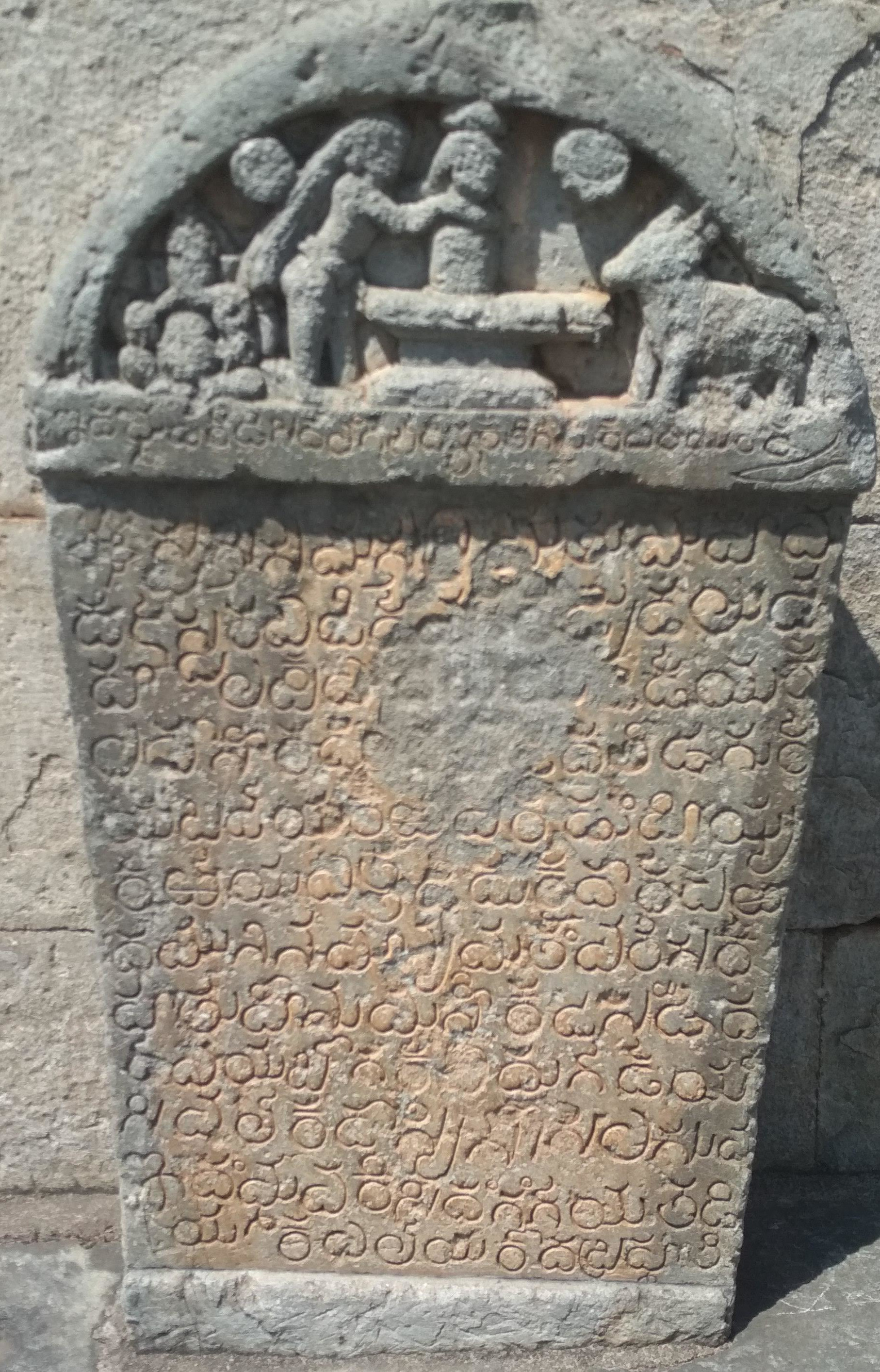
Inscription at Doddagadduvalli 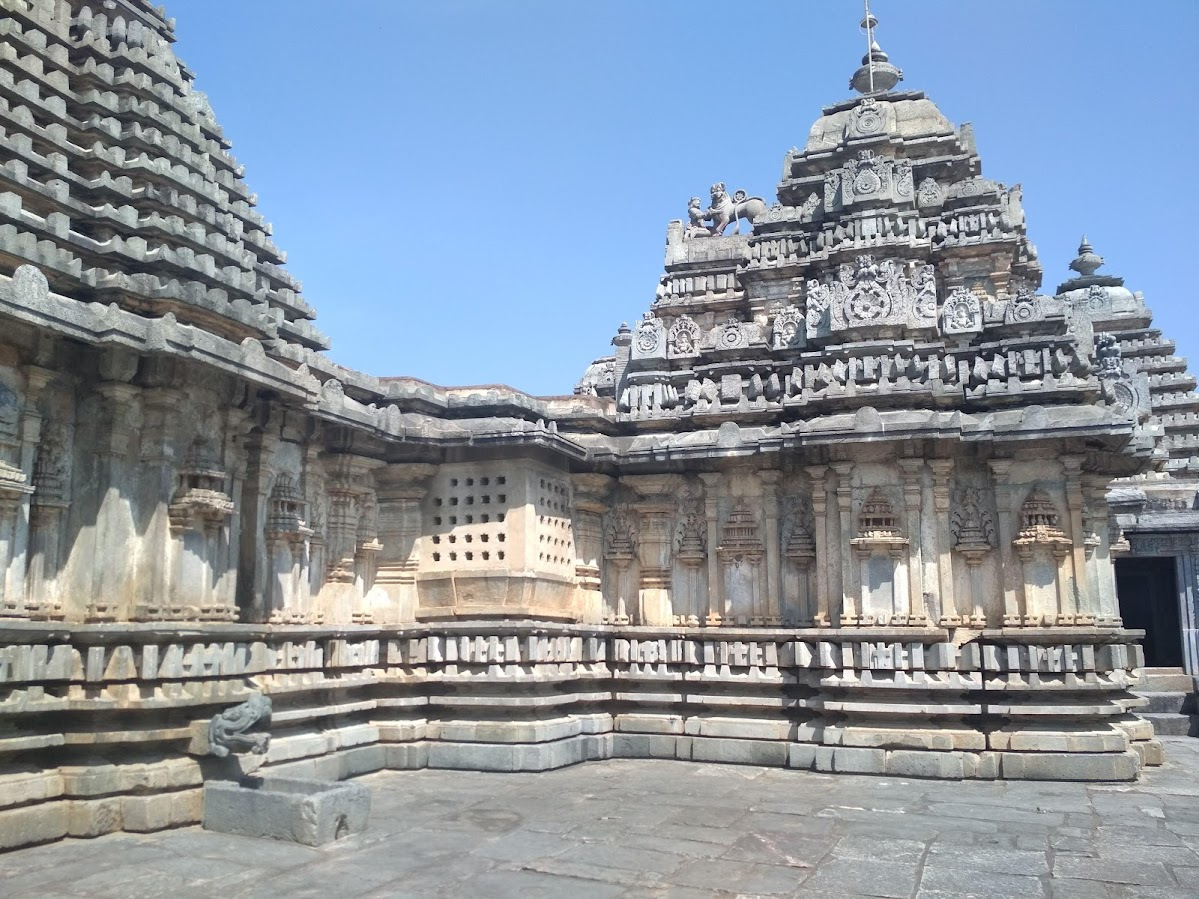
Laxmi Temple at Doddagadduvalli - Belure
According to popular folklore, the name Hoysala empire itself comes from the story of warrior Sala saving a Jain guru Sudatta by striking a tiger dead. The Strike literally translates to “Hoy” in old Kanada and the emblem of the Hoysala empire commemorates the Slaying of Tiger by a Sala. This emblem is commonly seen in and around the Belure area. The town of Halebedu which again literally means old capital was indeed the old capital of the Hoysala empire before it was sacked by Malik Kafur by orders of Allaudin Khilji of Delhi Sultanate in the 14th century. What remains of Hoysala’s legacy is breathtaking never less. Based on the Dravidian style of architecture, Hoysala artisans perfected the intricate beadwork. Featuring intricate meshwork, hanging statues along with figures and pillars decorated with mesmerizing intricate carvings it is arguably far more detailed than the Vijaynagara style that followed it.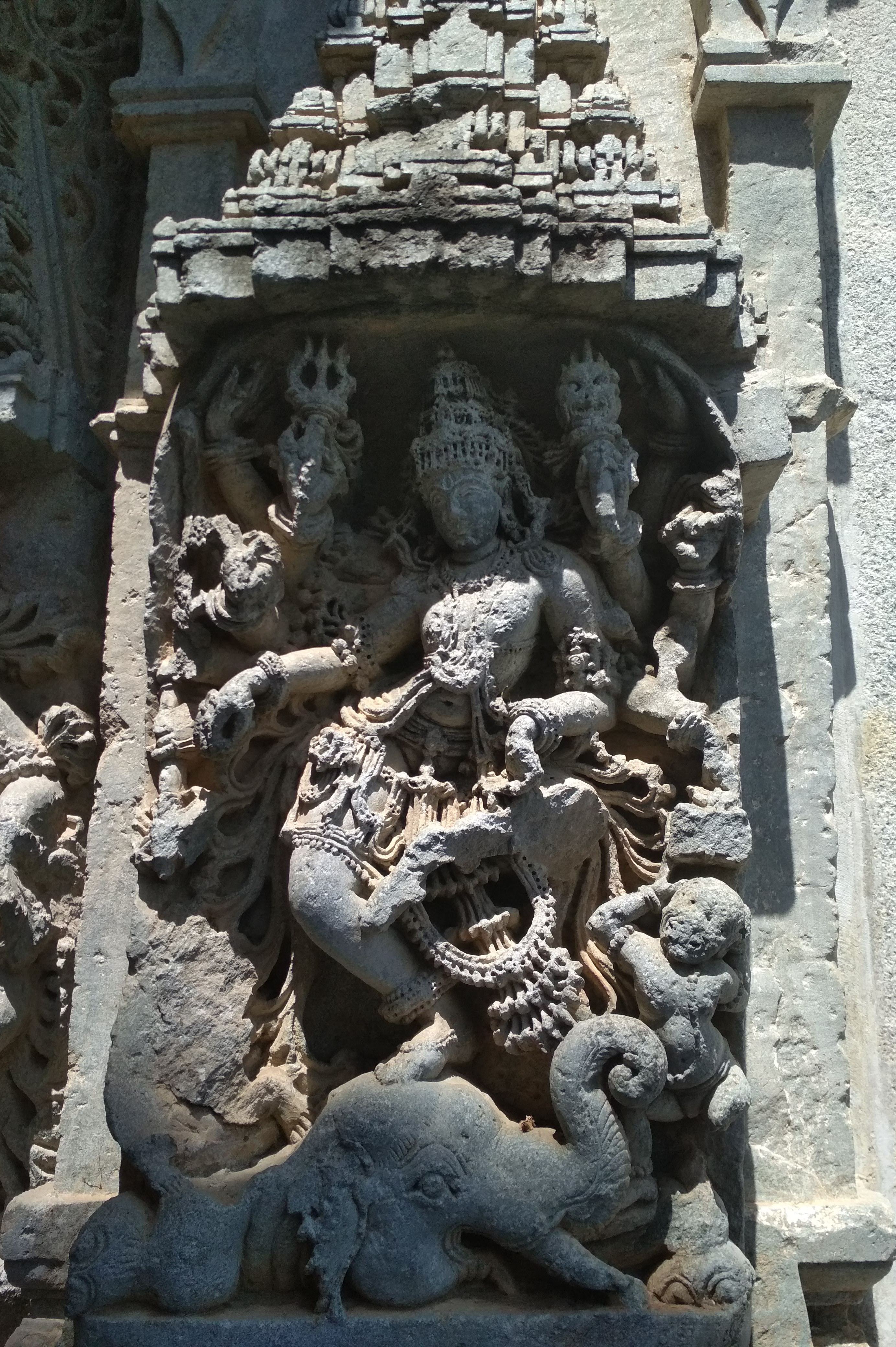
Shankara about to cut elephant head to revive Ganapati at Pataleshwara temple Belure - Shringeri
- Agumbe
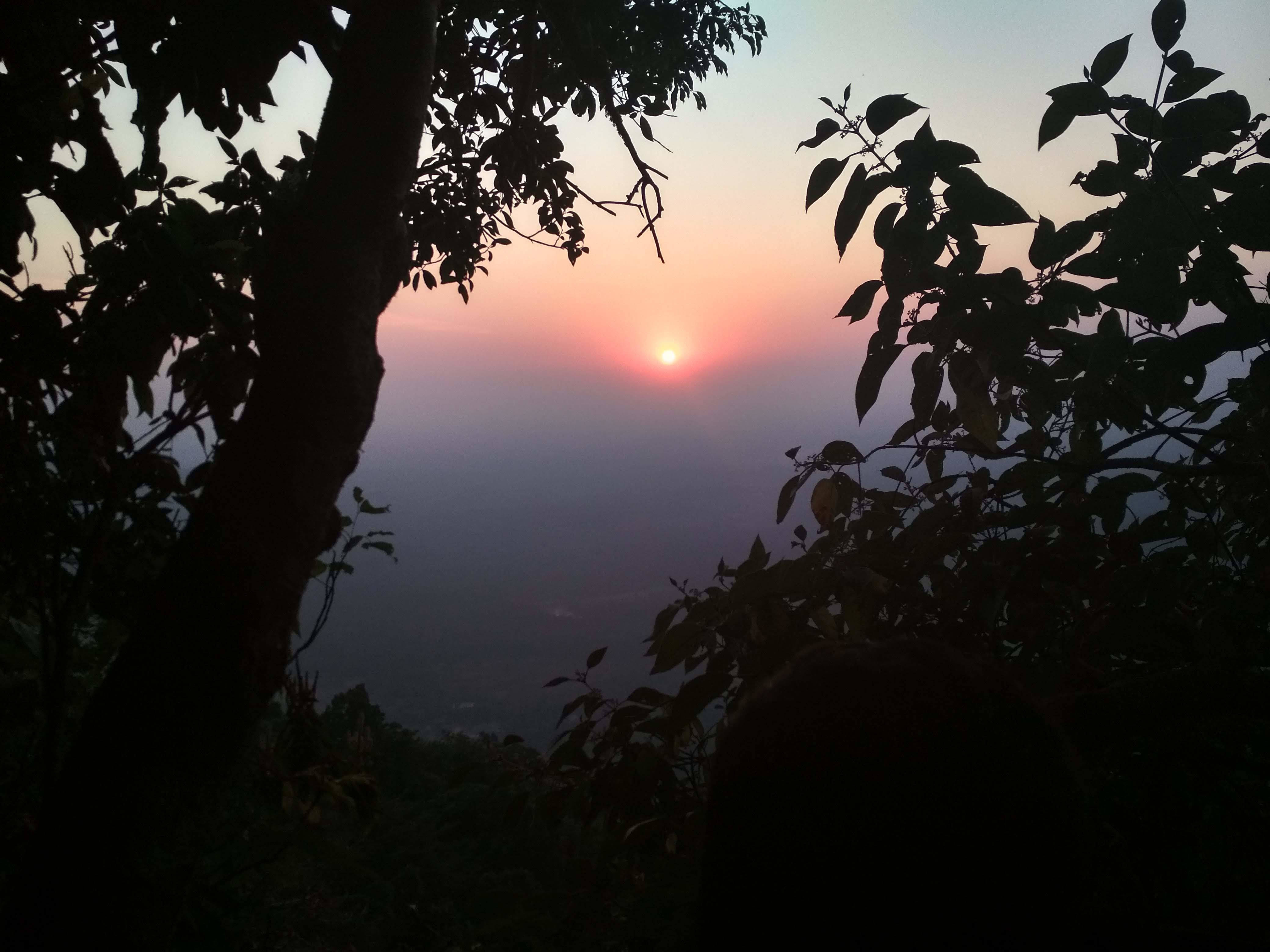
Sunset at Agumbe - Udupi
- Doddagadduvalli
-
Rajgad
Duration: 19th Jun 21 => 20th Jun 21Rajgad, formerly known as Murumdevs is one of the best-preserved forts in Maharastra and served as an early capital of the Maratha Empire for 26 years. I went on a night trek starting from the base of the fort towards the Palli gate. We reached there around 2:30 and then set up tents. There was supposed to be a sleeping break but 4 of us went on to trek towards the “Balekilla” (upper fort) and other parts till 4:30 am. Which was followed by a group hike to Sanjivani Machee to witness the sunrise. After that glorious encounter, we began a sleep-deprived and exhausted descent.
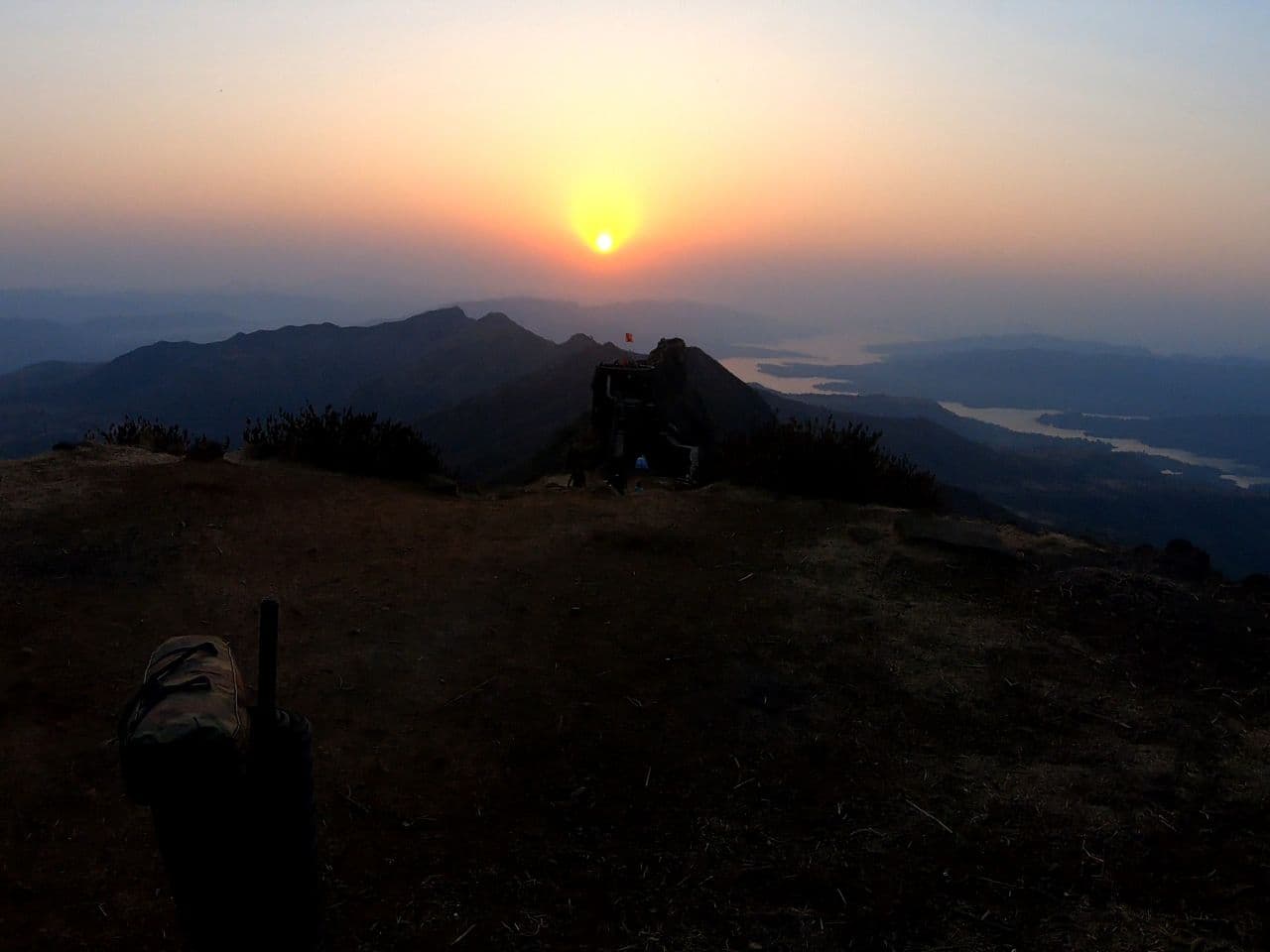
Sunrise-1 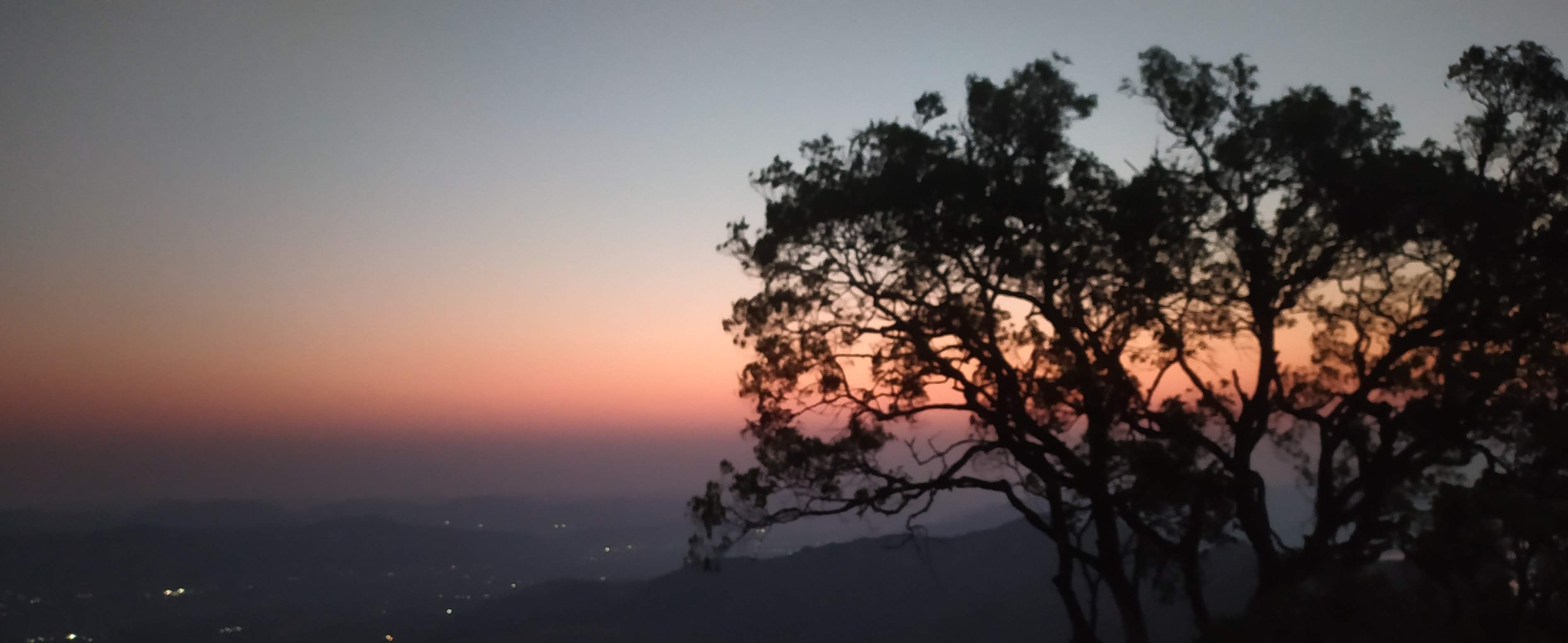
Sunrise-2 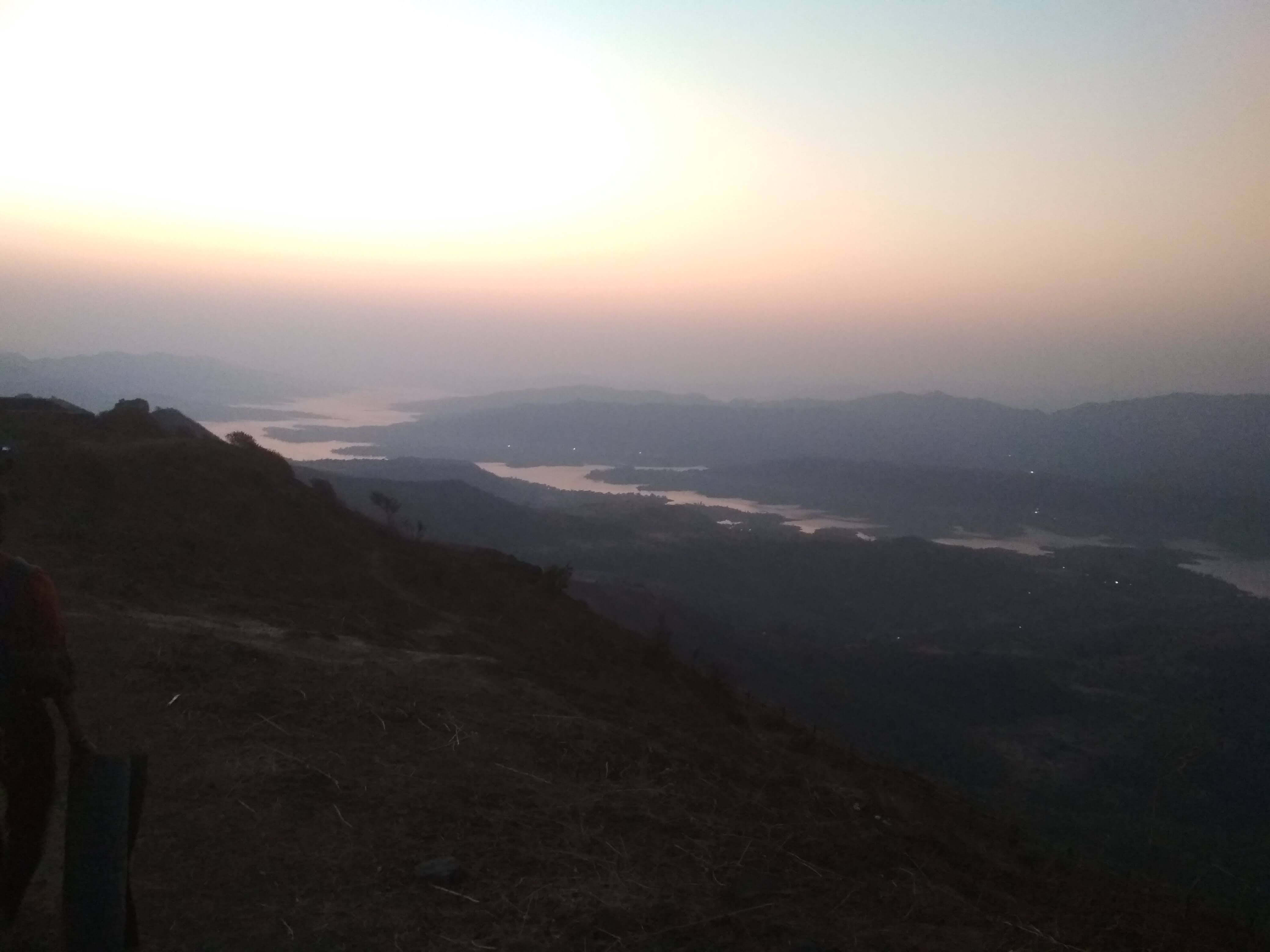
Sunrise-3 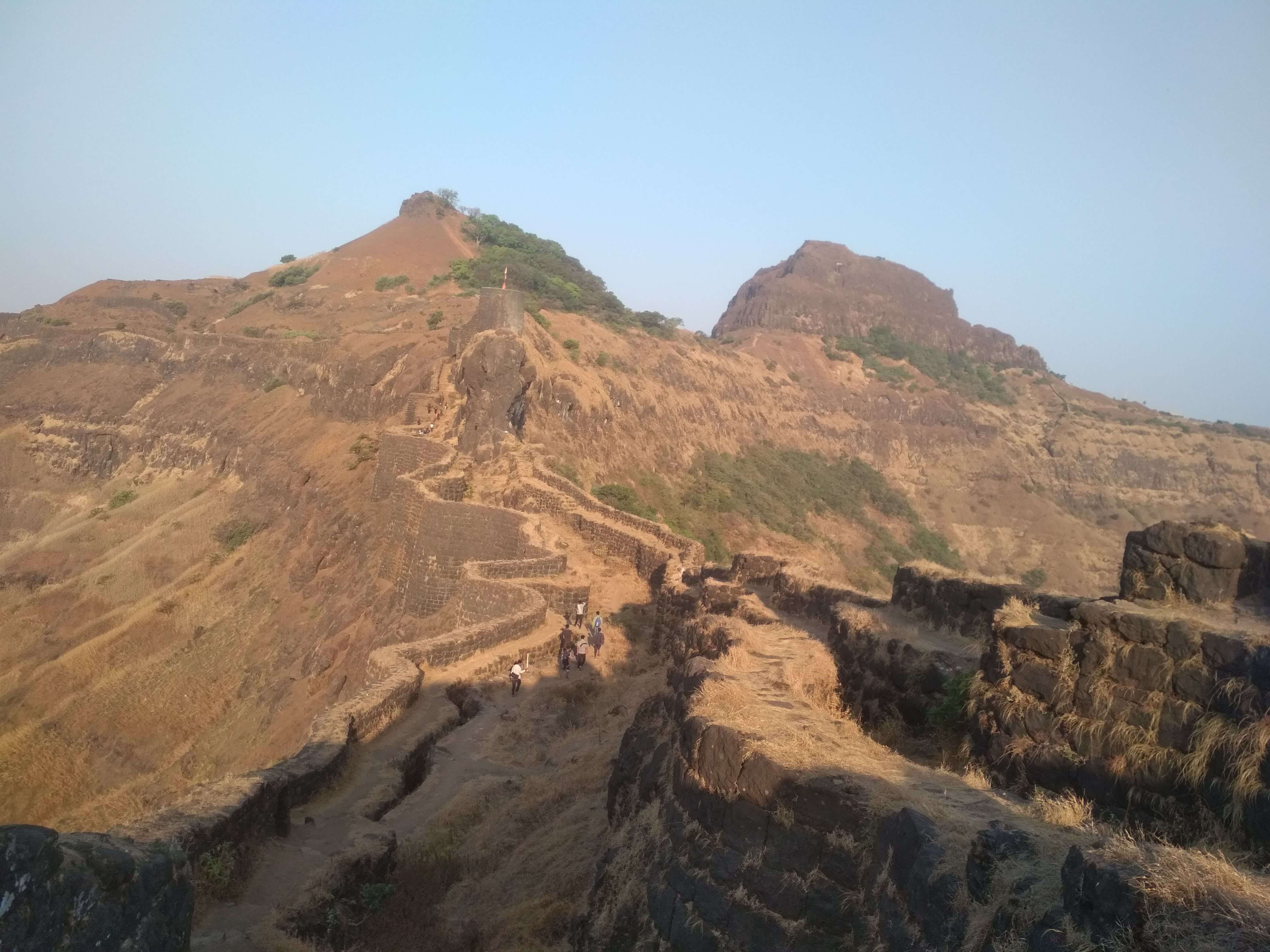
View from Sanjivani Machi -
Harishchandragad
Duration: 13th Mar 21 => 14th Mar 21Harishchandragad named after king Harishchandra was built during Kalachuri dynasty, who soon lost their territory to the Chalukyas of Vatapi.This fort also features the 6th highest peak Taramati (named after the wife of King Harishchandra) in Maharashtra state with height of 1,431m. There are references to this fort in Puranas and has a spiritual significance in Vaishnavism.
We left for the fort from Pune around 7:30 pm and reached the base at 3:30 am. After having night snacks, we started the ascend and reached the Taramati peak around 5:45 am. The ascent was non monotonous covering steep cliffs, forest paths, and plane ground. It became slightly challenging near the end but the view from the top was worth the trouble. We waited for the sunrise and then headed towards the Konkan Kada and nearby temples. Had breakfast at the fort and started our descent.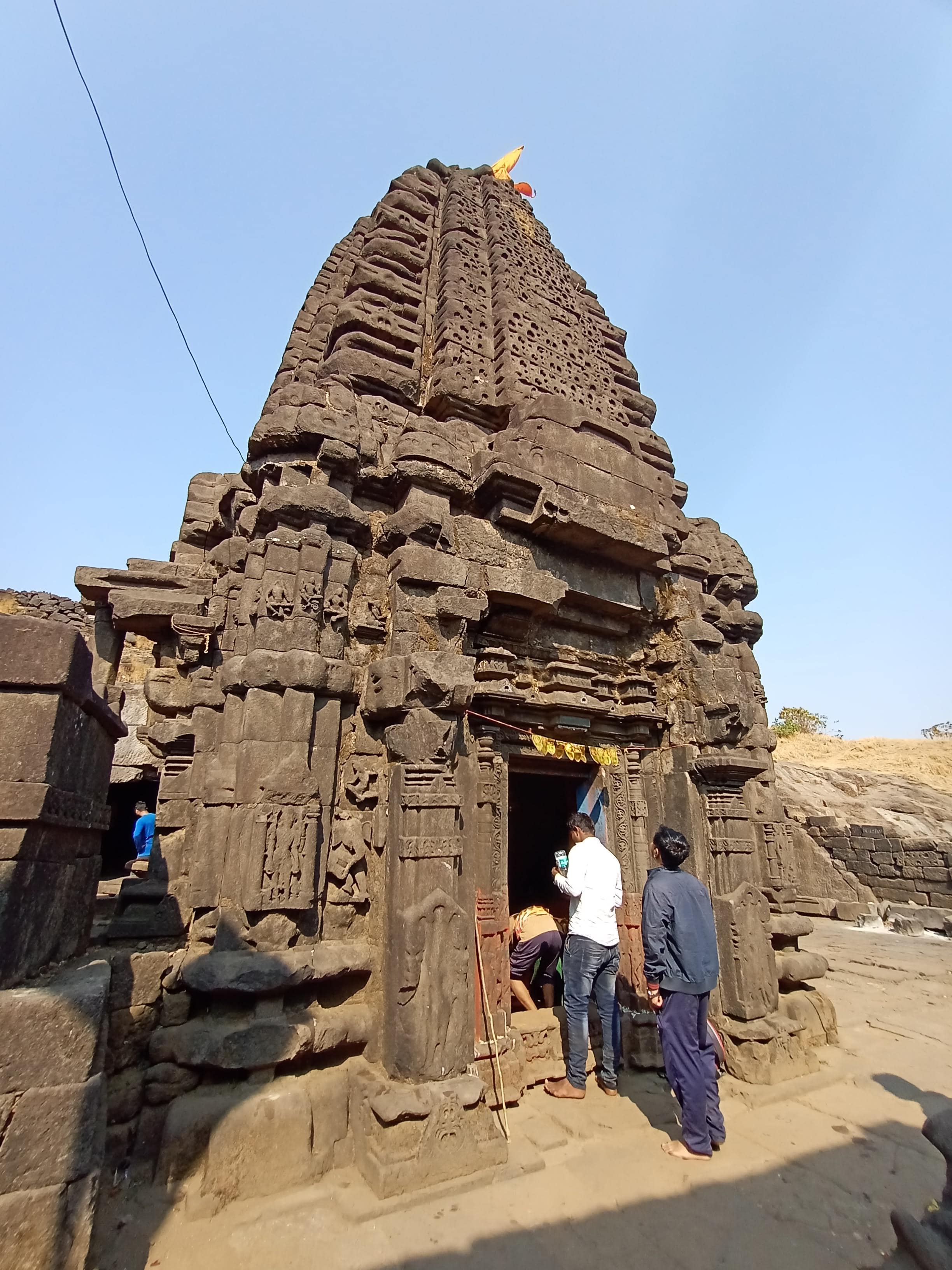
Random picture 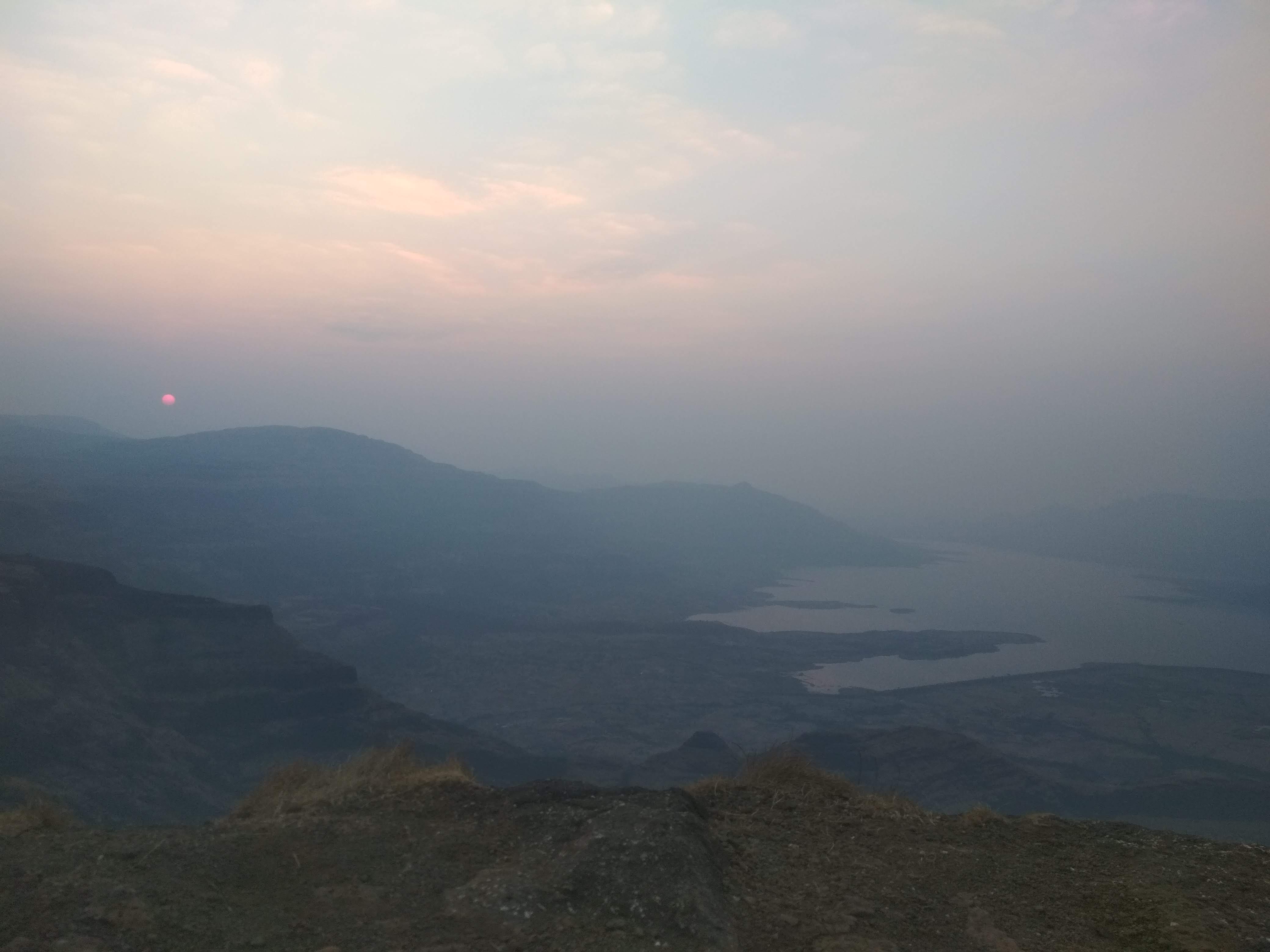
Random picture -
Ratangad
Duration: 19th Jun 21 => 20th Jun 21Ratangad was foggy, wet, and pleasant. An early morning trek on which we got lost near the end but managed to find our way back. These are the times I wished I didn’t have glasses. Started from Ratanwadi visited all four gates (Ganesh, Hanuman, Konkan, and Trimbak) and needle head along with some caves. Also rice paddies.
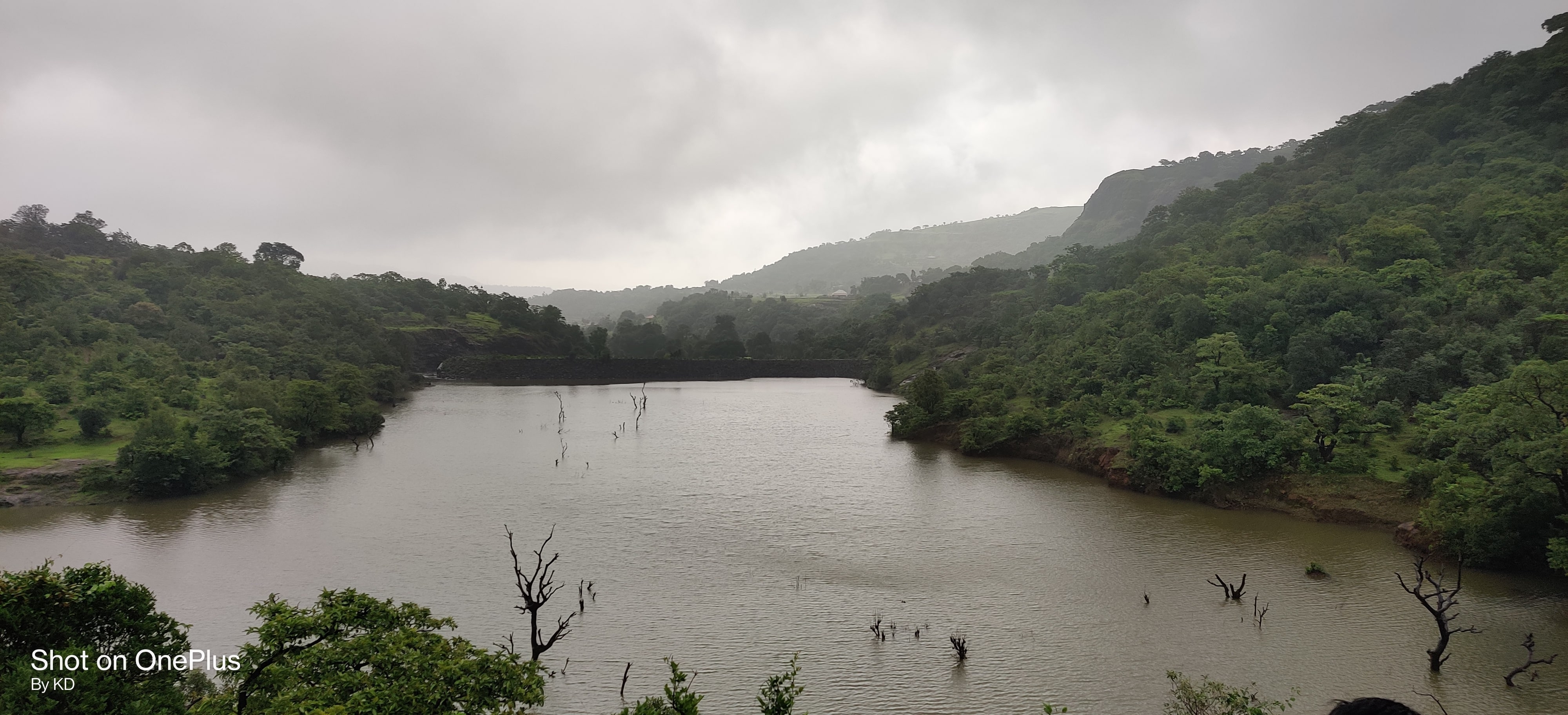
Temple of Harishchandreshwar 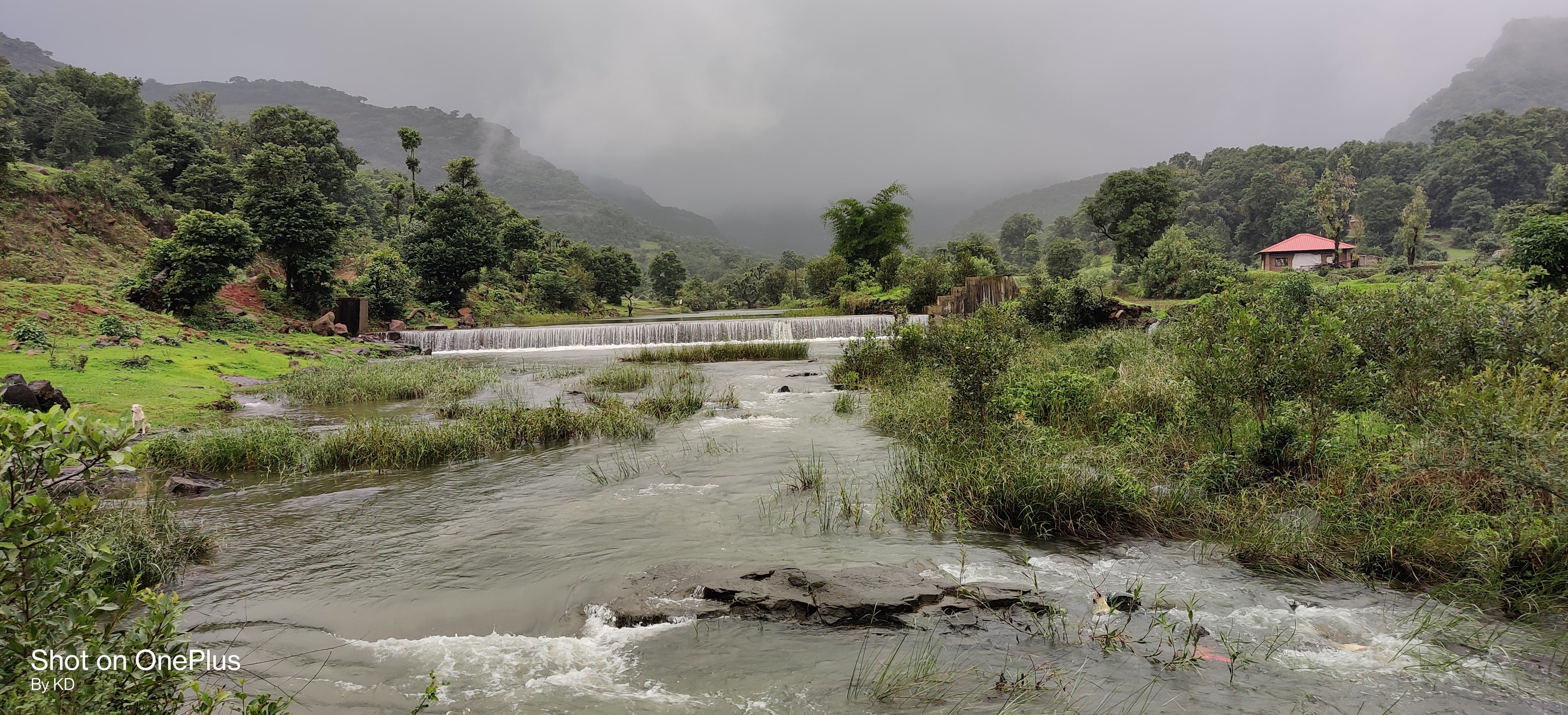
Sunrise -
Matheran
Duration: 12th Apr 21 => 13th Apr 21Bad don't go too expensive for no reason. Matheran, Maharashtra’s popular weekend getaway, lies on the western ghats at a height of 800m from sea level. Located at a distance of 90km from Mumbai and 120km from Pune, this little quaint town offers a breath of fresh air, a clear blue sky, and lush green vegetation. Being Asia’s only automobile-free hill station, Matheran immediately takes you back to a simpler time of horses and clay carts. Matheran means “forest of the forehead”. The earliest mention of this town was in the 15th century CE. The Prabalgad Fort, previously known as Muranjan Fort, was built by the Bahamani Sultanate to keep an eye on the North Konkan provinces. When the Sultanate collapsed, the fort went into the hands of the Mughals. In 1657, Chhatrapati Shivaji Maharaj conquered this fort and the surrounding area. At that time, the hill station was inhabited by the Dhangar tribe.
-
Rajasthan
Duration: 7th Oct 21 => 17th Oct 21- Ahmedabad
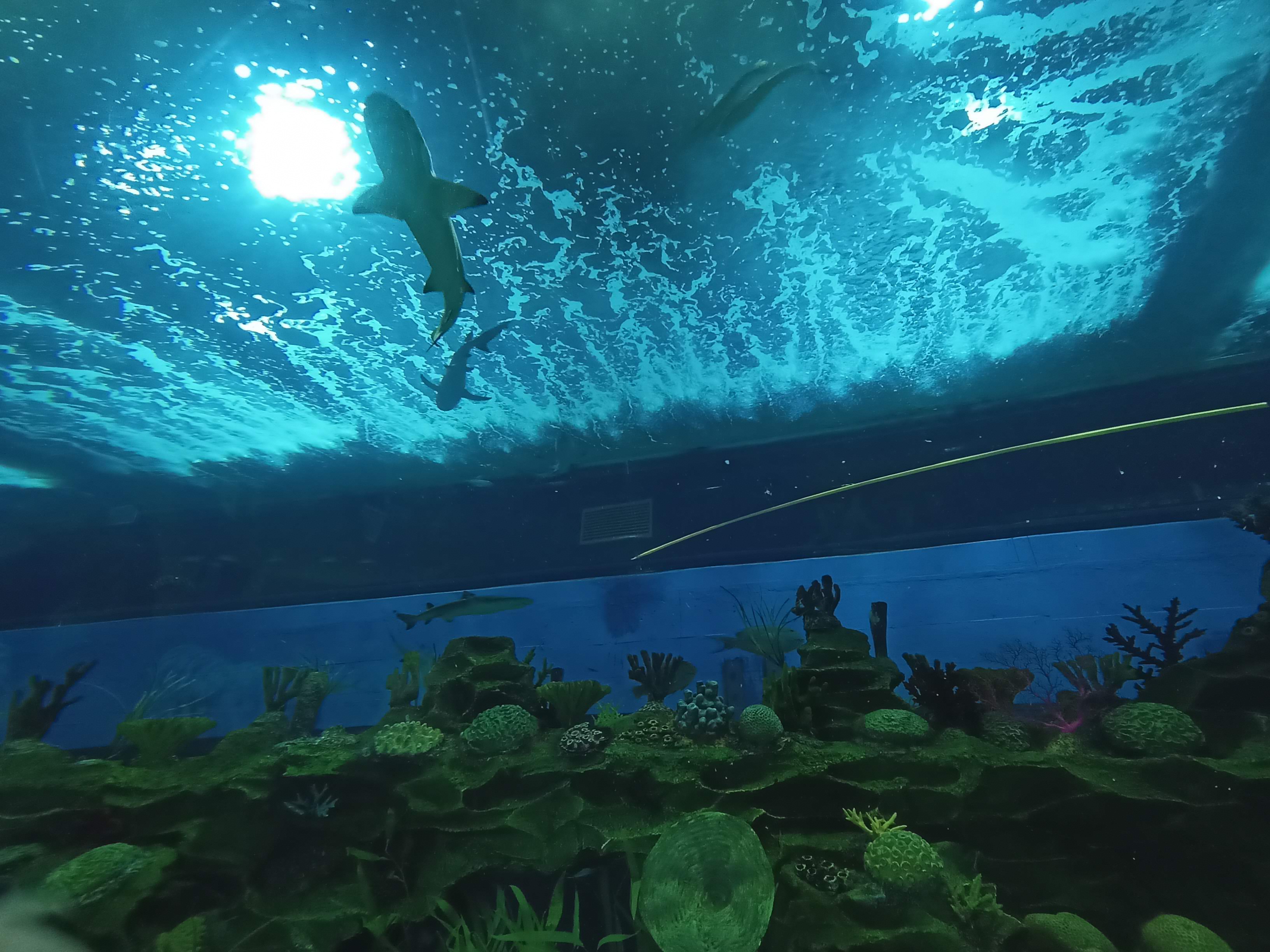
Aquarium - Udaipur
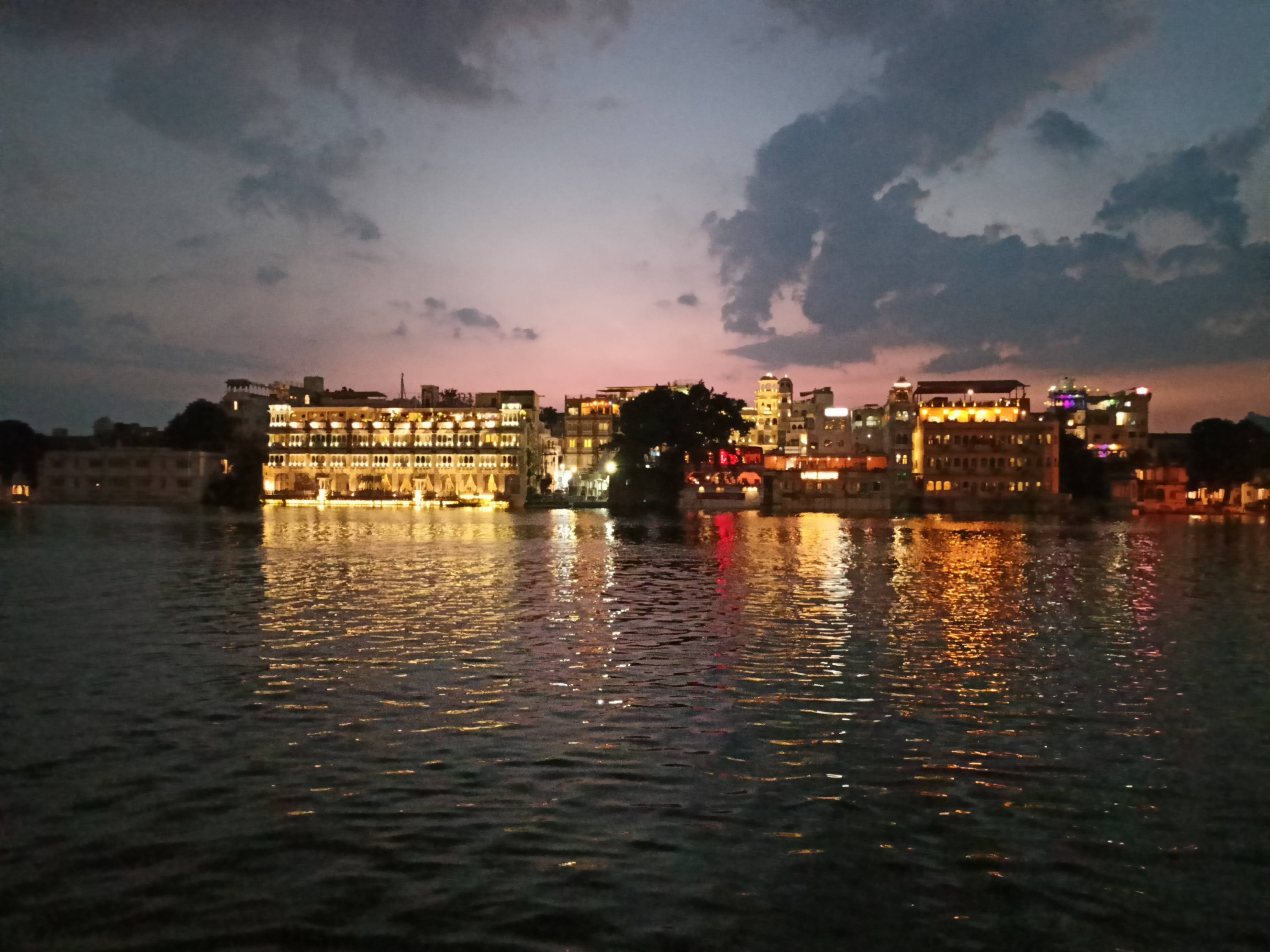
Udaipur at evening - Jodhpur
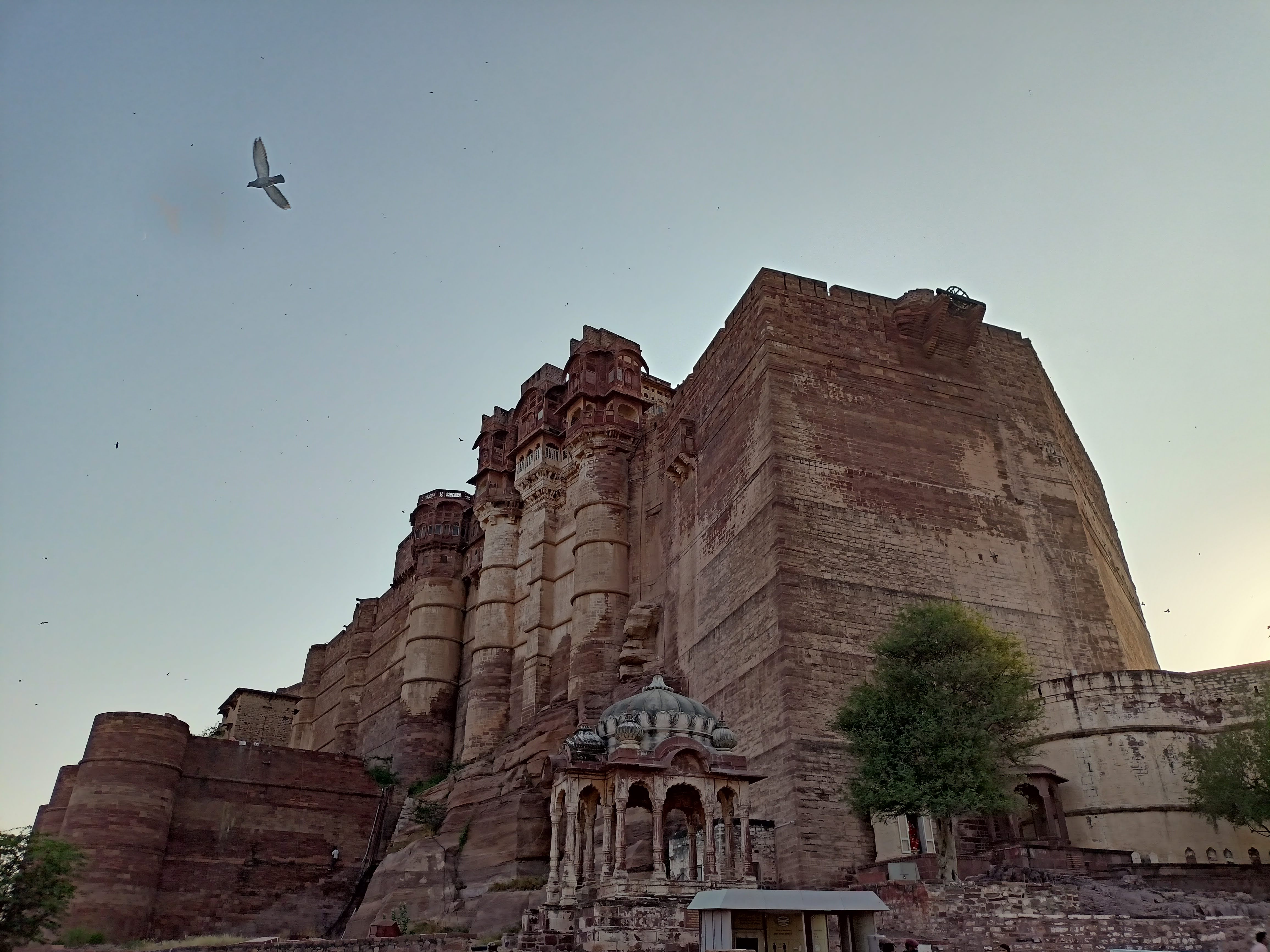
Jodhpur castle - Jaisalmer
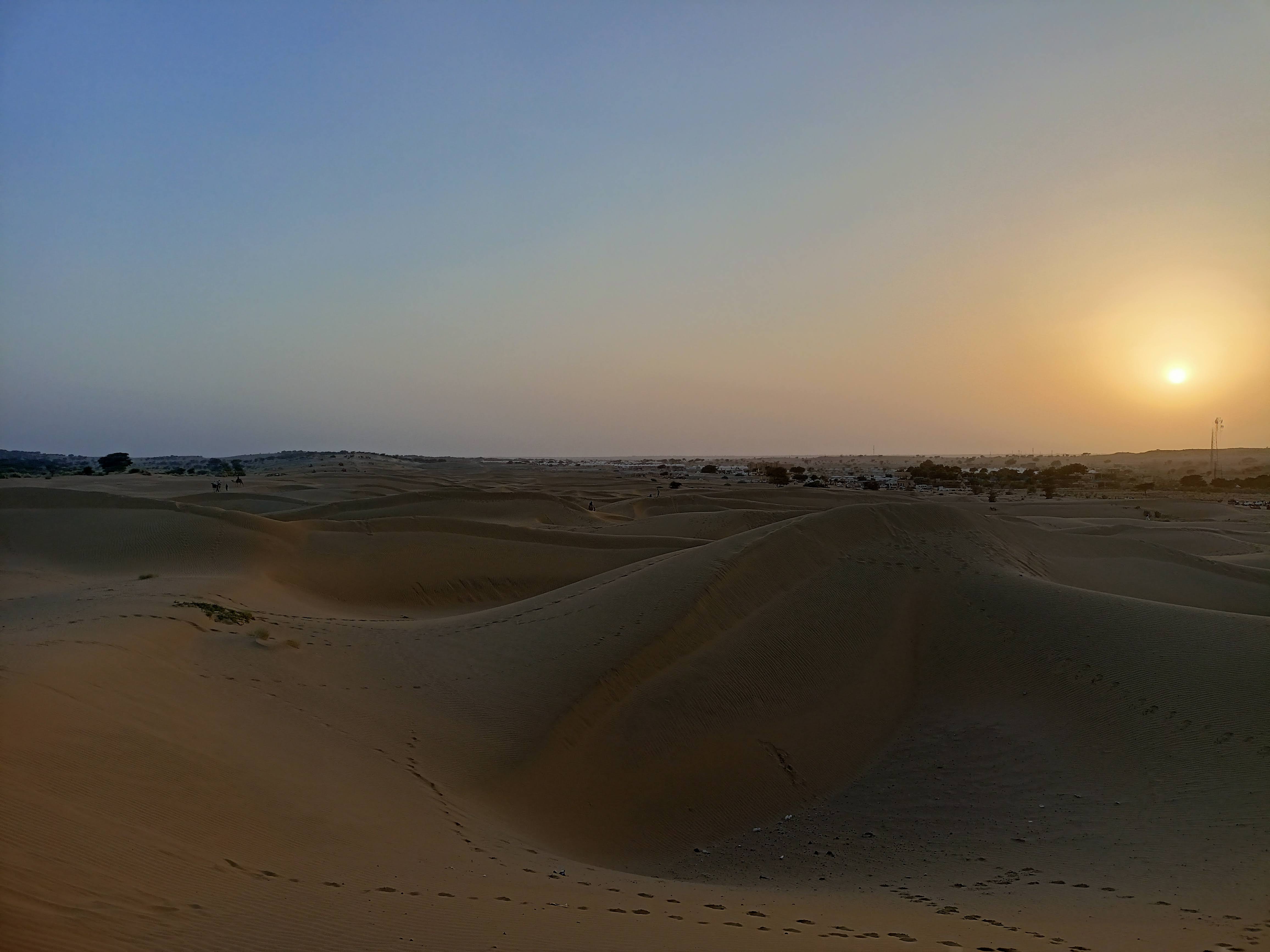
Sand dunes - Jaipur

Hava Mahel 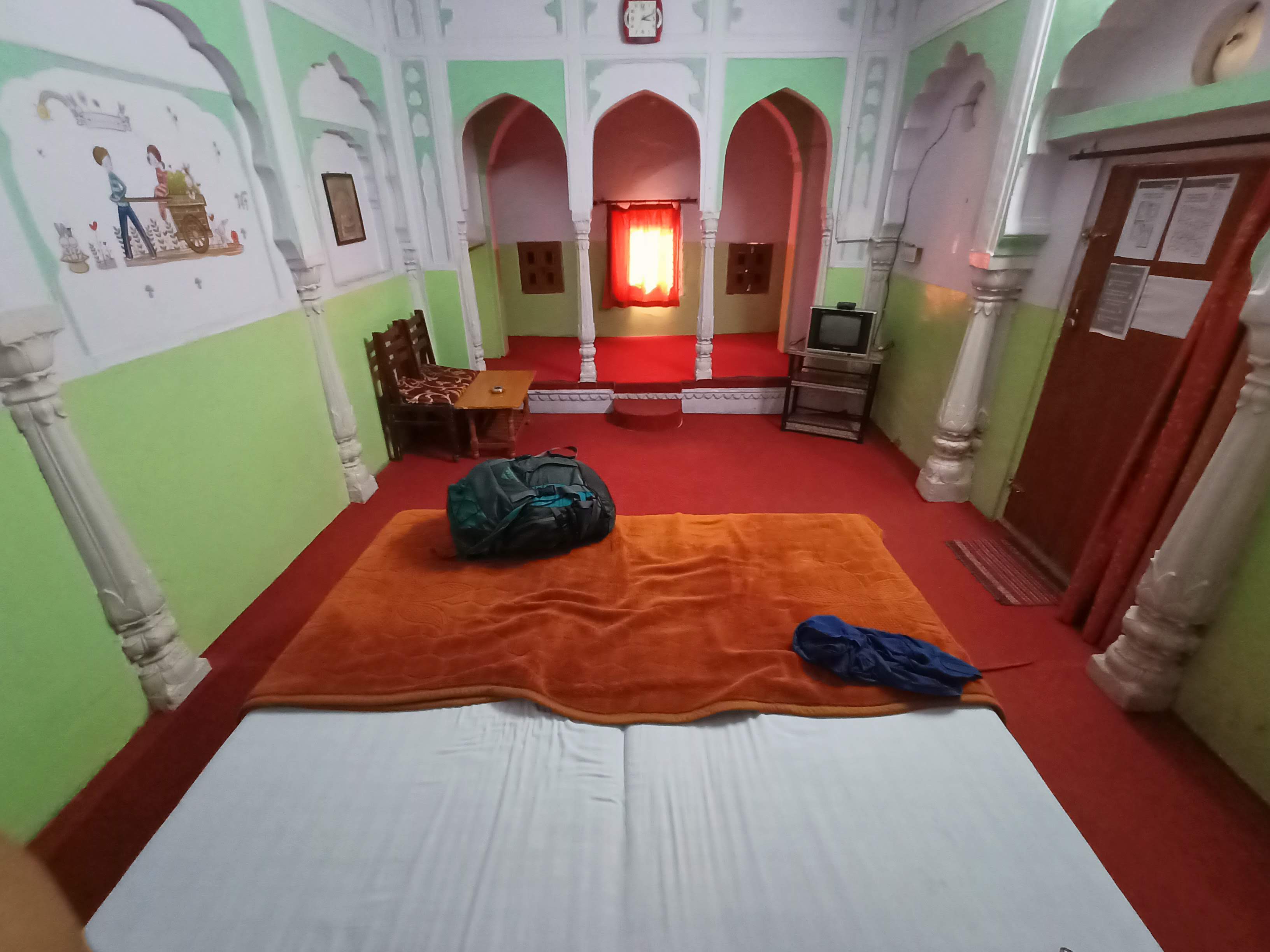
A royal hotel room
- Ahmedabad
-
Uttarakhand
Duration: 2th Dec 21 => 10th Dec 21- Ahmedabad
Went to Decathlon, and got blown away by the sheer variety of CHEAP stuff. Enjoyed IIM ambiance, had some good food at Kamala canteen. Saw library. - Delhi
JNU has too many nihilist slogans on hostel walls. Reviseted Kutub Minar. Blue Tokai: sweet pancakes. Lodhi colony: good art, Carnatic cafe: great food. Tried Malleswaram 18th cross, Benne Khali, Mandakki, Bombat, Kesar bhat all good stuff. Went to India gate and took a train from there till Rishikesh.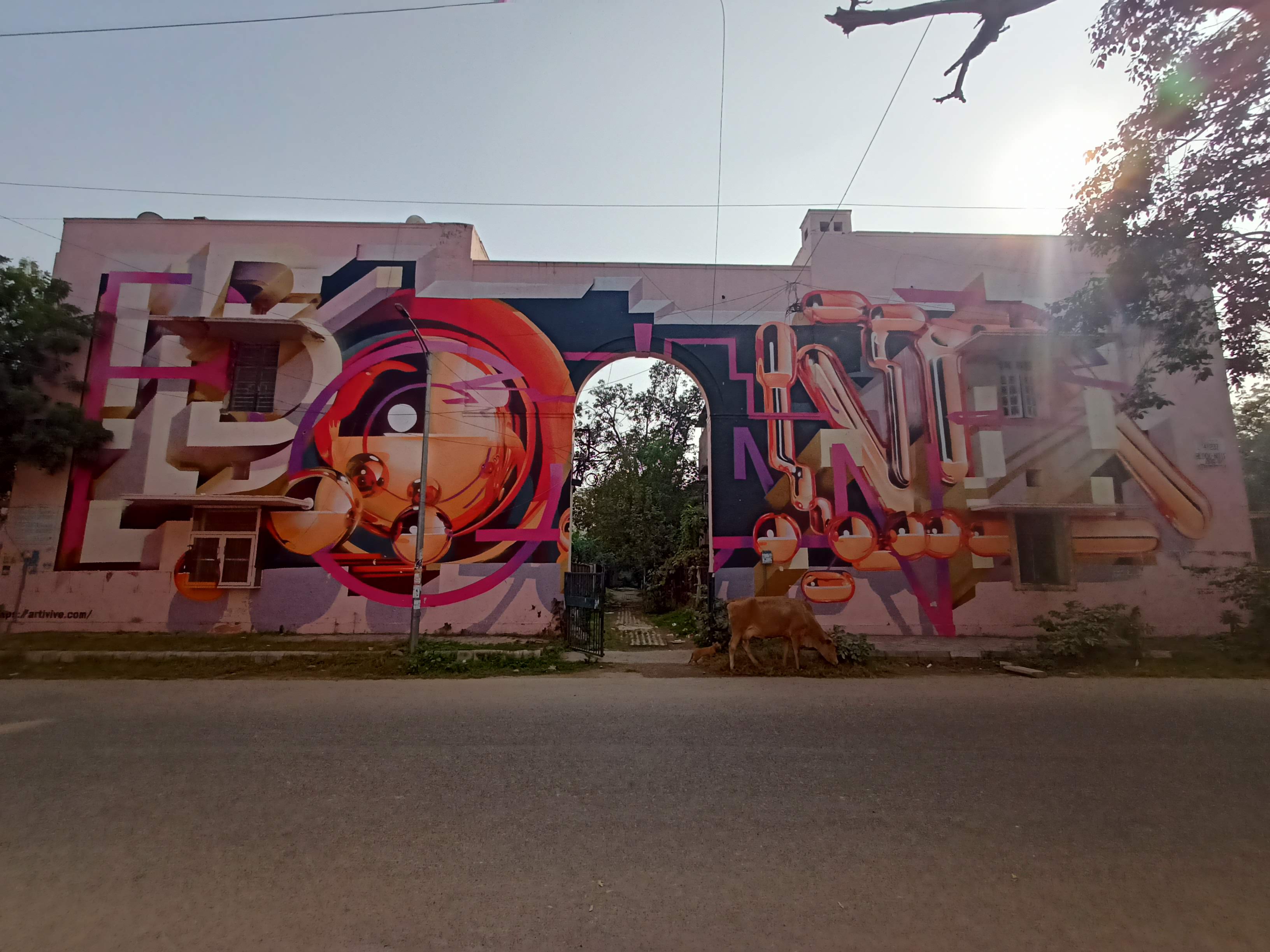
Street art - Rishikesh
Got a hotel that will give us an early check-in at 8 am. Got a Royal Enfield hunter 350. Breakfast and then places in Rishikesh. Ghat, beetles ashram. They should just let graffiti artists paint those derelict buildings and call it graffiti ashram. German cafe with a great sizzler and too many Tantrik books. Ganga aarti, Hoshiyarputi; liked name got lassi also saw a couple of Japanese women drinking the same lassi. Ate chole bhature then back to the room.
Ganga 
Beetles in rishsikesh - Dehradun
Reached dehradun, left for masoori after lunch on a kick-started Activa. Reached zostel masoori.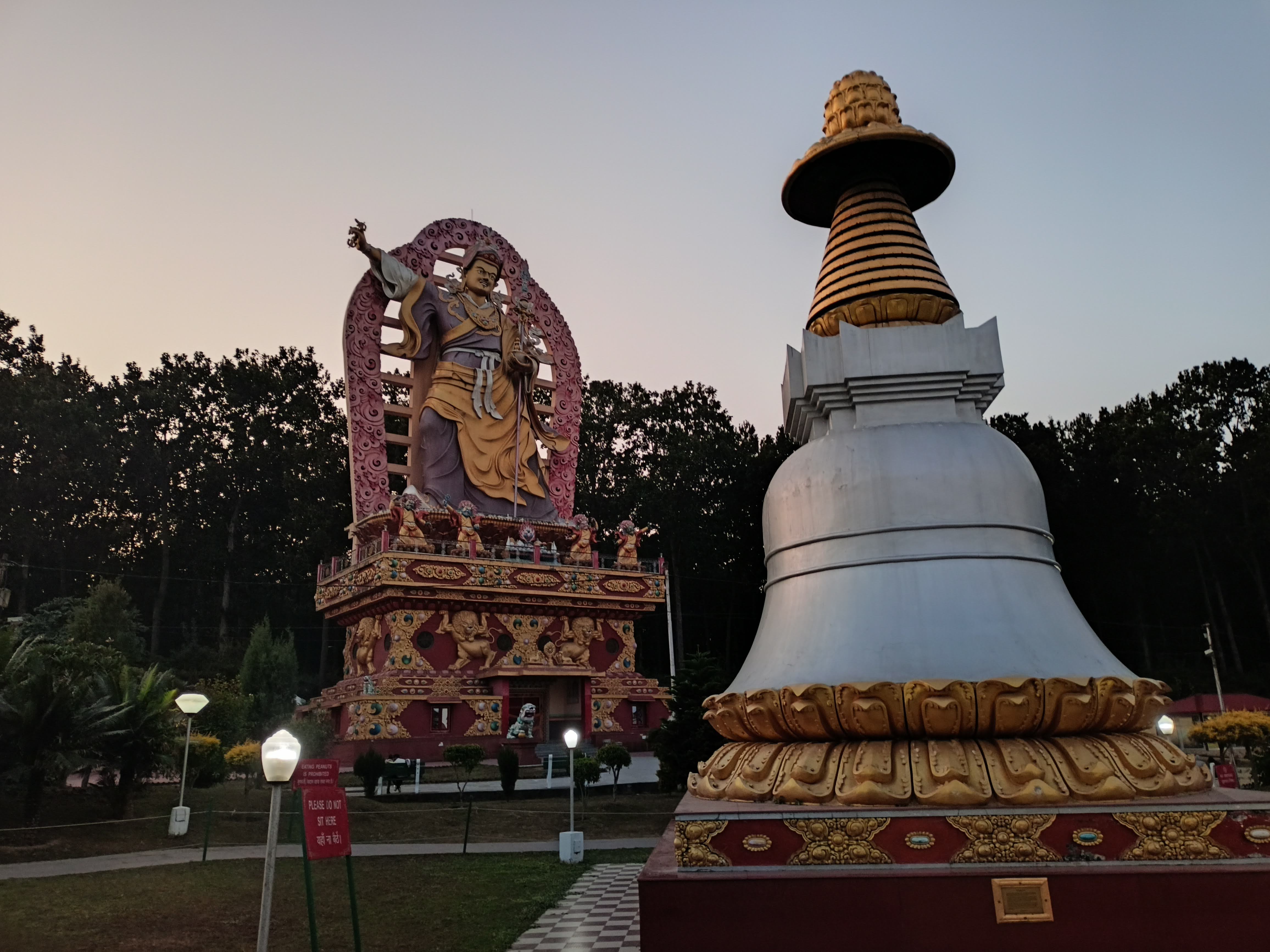
Buddha temple - Masoori
Visited kempty falls, and the company garden and shopped near LBSNAA for some handicrafts and woolen jackets. Reached cloud end view point with a lot of kicks to Activa and waited for it to cool down after steep climbs. Royal Enfield bikes are best for these scenarios.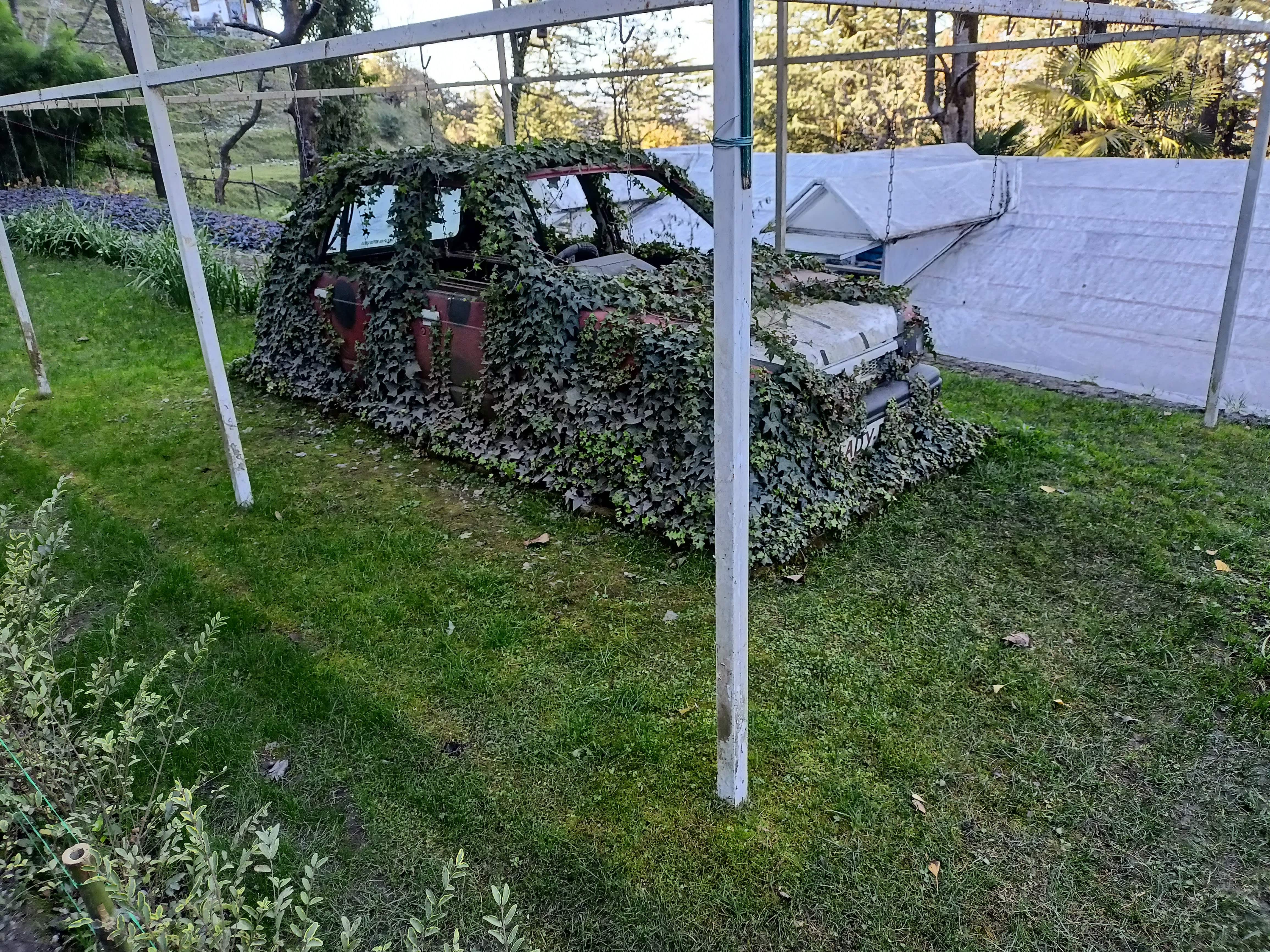
Company garden 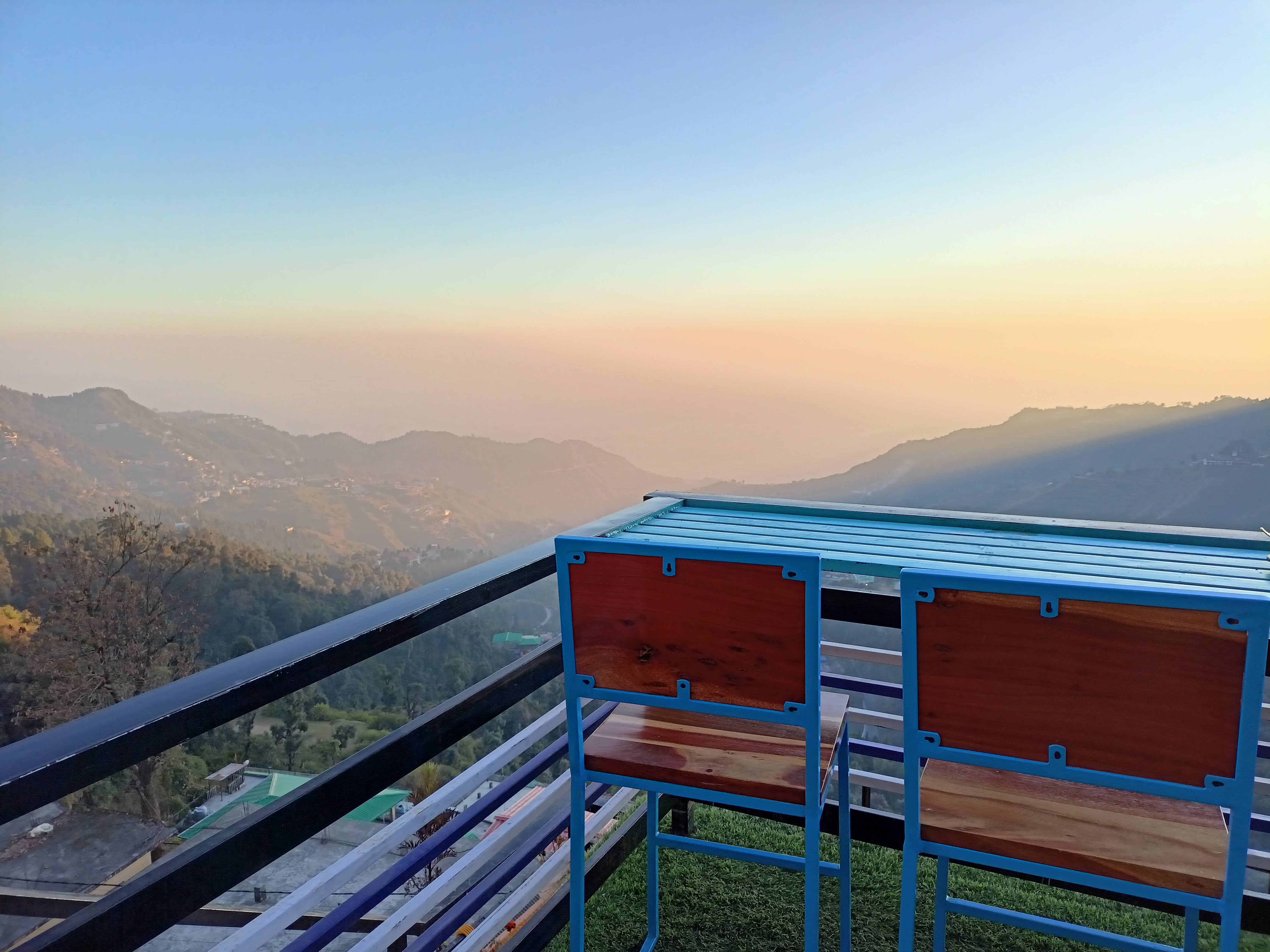
Sunset - Masoori
Visited lal tibba and nearby cafes. Had some great omelette at Lucky omelette centre. Drive back to dehradun. Had home food, walked around in the city centre.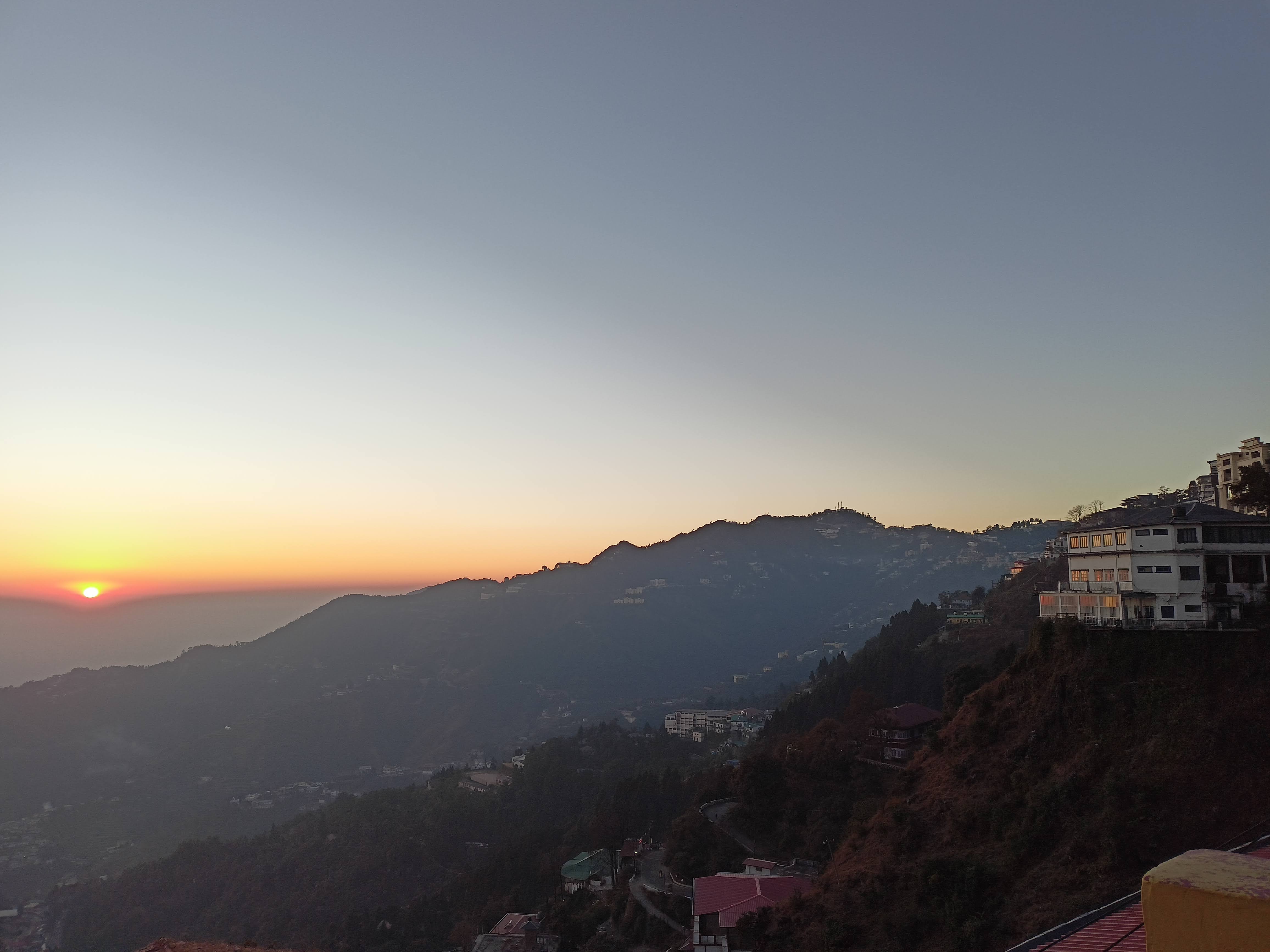
Sunset - Dehradun
FRI museums: fungus museums looked artistic. Melting moments: got cookies. Went to Buddha temple pretty serene. Had saraso ka saaj and makke ki roti.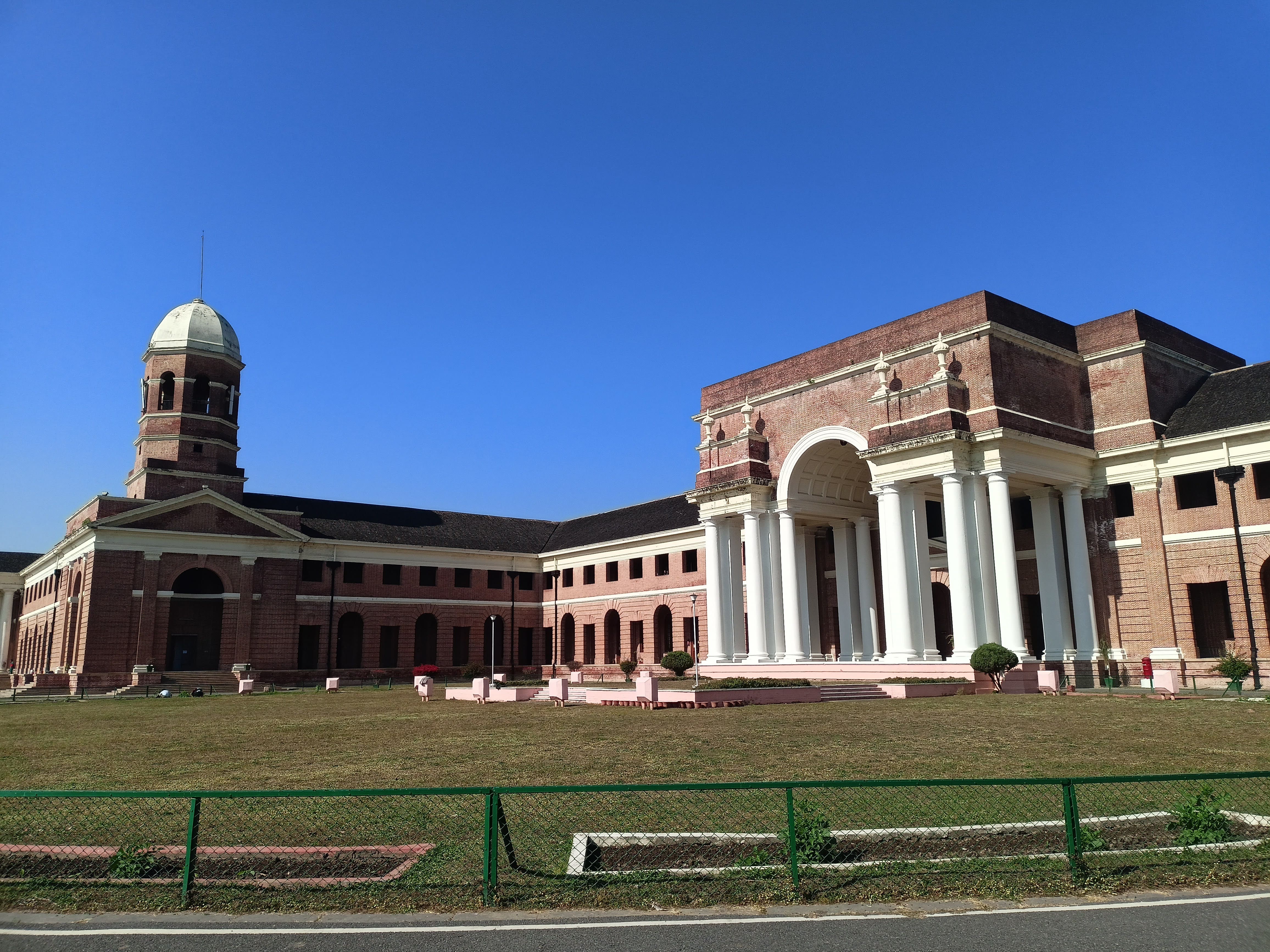
FRI - Delhi
Reached Delhi at 4:30 am got ready in a UPSE Aspirants room, and saw his library. Went to the Indian habitat center via metro and ate shakshuka. Traveling by metro is a breeze, loved it. Went to Sarfargunj, Lodhi garden, Jantar Mantar, and canought place. Ate the papadi dahi bhalle chat. Went to Farzi cafe to experience some weird ass molecular gastronomy. Had smoked chicken and dal chaval dried balsWent to mount Fuji for some octopus nigiri and other assorted Japanese dishes.
Safdarjung's tomb
- Ahmedabad
-
Lollapalooza: Mumbai
Duration: 28th Jan 23 => 29th Jan 23Visited a amazing italian cafe : Cecconi's Italian place: Bruschetta, gnocchi, mushroom canalloni, pizza.
There was some good finds in the music festival:- The Strokes!(My new all time favourite! Amazing find.)
- Madeon (Most amazing visual display. Truely mesmerizing.)
- Wombats
- Sand dunes
- Greta van fleet
Prateek Kuhad was good but we went for the DIVINE and DIVINE was very off beat very regretable.